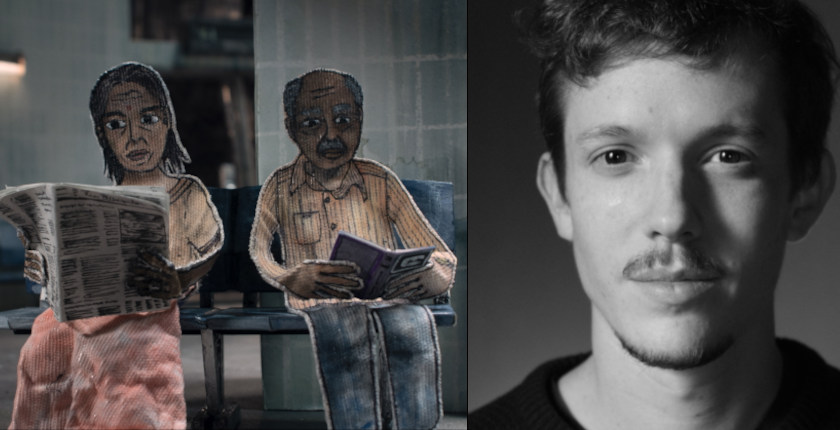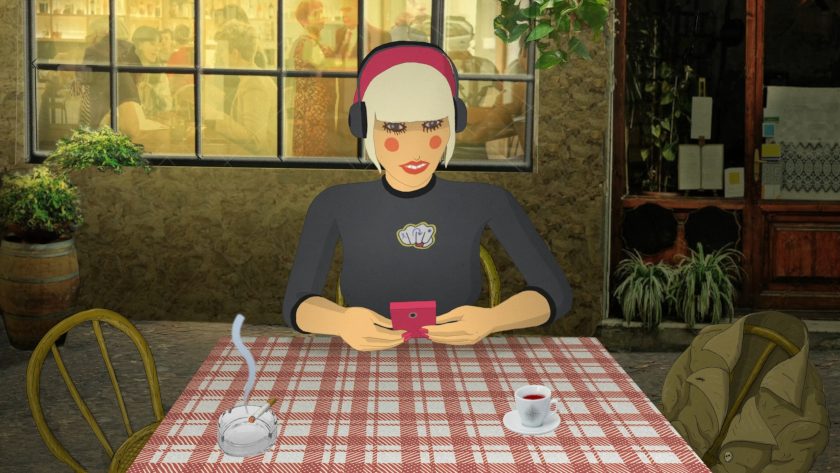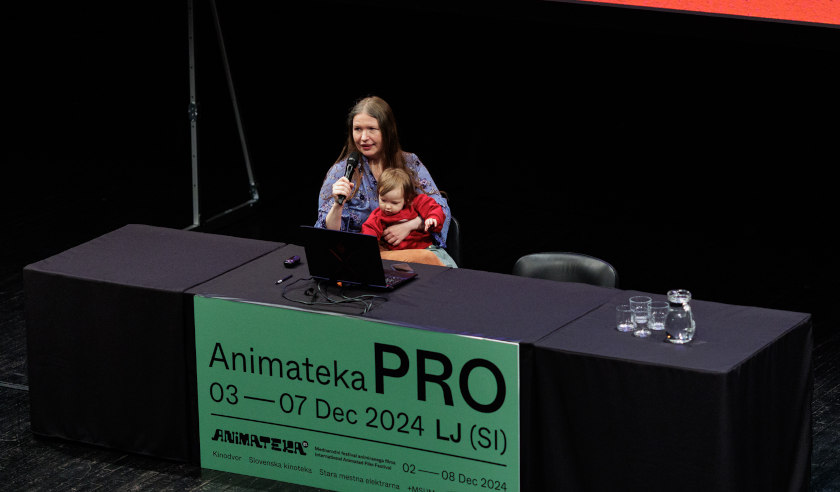'When The Idea is The Most Important”: Interview with Maja Gehrig (Swiss Animation Portraits 2022)
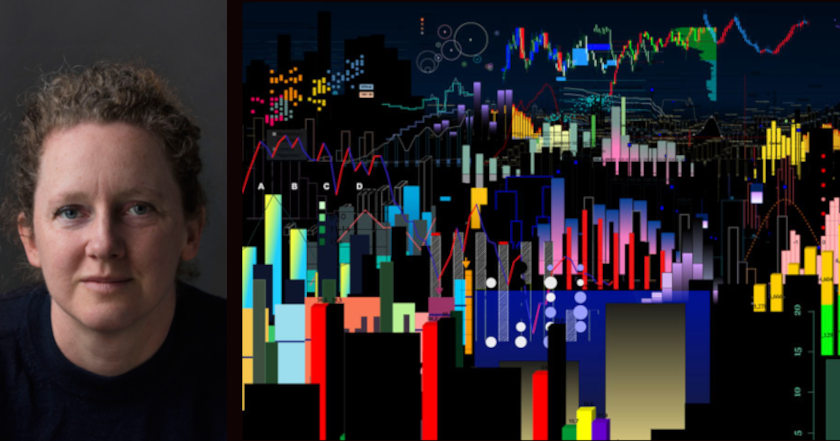
Maja Gehrig is a Zurich-based animation filmmaker and is a teacher at Lucerne University of Applied Sciences and Arts on the BA Animation course. Her animation shorts, such as 'Amourette' (2009), 'Queen Po' (2015), and 'Average Happiness' (2019), employ a variety of techniques and have received international acclaim. The last one, her most recent work, won several awards at various festivals and was named Best Swiss Animation in 2020.
Last year, Maja took part in the jury of the 'Contrechamps' session, of Annecy Animation Film Festival. She is also co-president of ASIFA Switzerland with Elie Chapuis (GSFA).
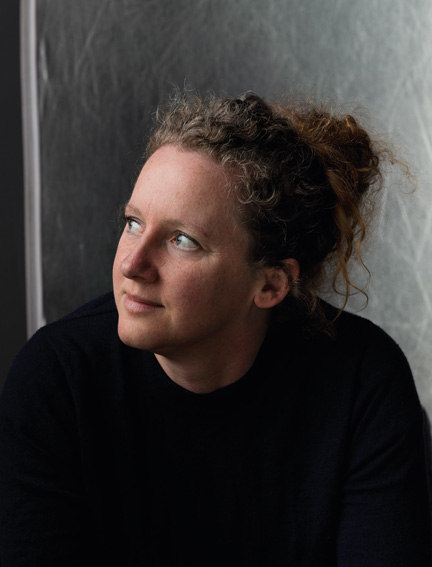 As part of the 2022 Swiss Portrait Series, we talked to Maja Gehrig. That resulted in a very special moment for the ZF readers: when we are able to understand a little, how an artist-animator elaborates, constructs, and thinks about her own work.
As part of the 2022 Swiss Portrait Series, we talked to Maja Gehrig. That resulted in a very special moment for the ZF readers: when we are able to understand a little, how an artist-animator elaborates, constructs, and thinks about her own work.
ZF: First of all, please, which was your course at Lucerne University, and how do you think that is course gave you the expertise to enter the animation world?
MG: I started my studies in 2000 in industrial design for half a year, but I quickly understood that design is not my world. So, I switched to Media Arts, but I was not satisfied with the work that I was doing there. Then I did an internship in Estonia at Eesti Joonisfilm, the studio founded by Priit Pärn, where I realized that I wanted to do Animation.
Just then, I applied to Lucerne, a four-year course at HSLU Design & Art. It was a very new school. Gerd Gockell was head of the department. At that time, there were not many animation schools. Maybe I didn't learn as many skills as they learn nowadays, but it was crucial for me to find my own ways. It helped to have this framework of the school and the expectations that you are doing animation work in school and afterward. There was also Otto Alder, who introduced us to the festival world. So, I think all this was very important for me. Later, I did a MA at the same school. I'm a teacher there now, for Experimental Animation.
ZF: What did make you take the path of Animation Art?
MG: I felt that in media arts, I was only sampling. I was not interested in programming, so I took the audio / visual content from others for my mostly "installative" work. I felt the urge to do something genuine and understood Animation as the possibility to combine my interests: narration, visual art, working with materials, drawing, and sound. Sound is a significant interest of mine.
What I also like about it is that you can create from scratch, you can implement a vision that you have, and you are in control of the aesthetics. More or less, of course, it is always different in your head than it is on the theatre screen. The surrealistic aspects of making move drawings or objects this is still the most fascinated thing about Animation. It is more the media, in an artistic sense, that I am interested in rather than classic Storytelling or Animation.
I don't use the same technique or aesthetics in my films. I think this is what interests me: to bring things together that have nothing in common but somehow metaphorically make sense through the animated image.
ZF: I love this possibility when you work with Animation. So, in the universe of Animation, what moves you more?
MG: I like a lot of experimental films when they have an interesting dramaturgy. I have nothing against mainstream or industry stuff, but it is not for me. In Animation, I prefer short films because you can try out things that would be difficult to bear in 90 minutes. I don't intend to work on feature-length. The only reason would be the possibilities of sound.
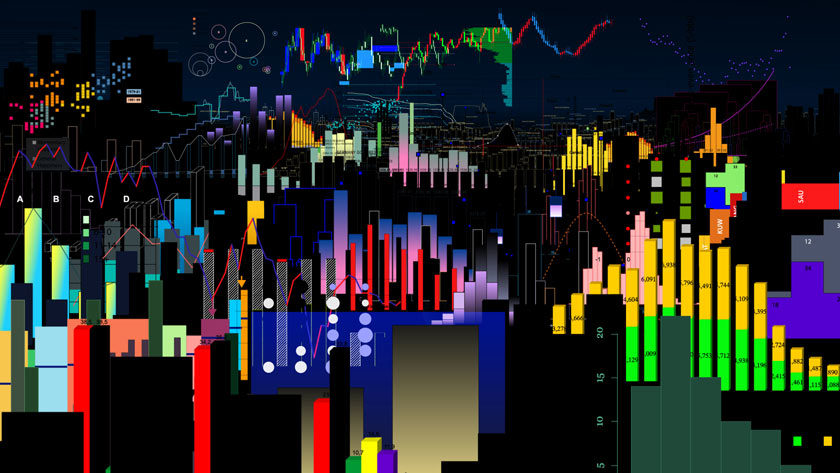
ZF: I have watched your films, and in my view, they carry a kind of "necessity to fill up something". Is that your goal to talk about a "lack of anything" throughout different narratives?
MG: I thought this was an exciting question. Because I never thought of it. What I really believe in is "doubt". Nothing is possible to know for sure. I believe this is what you feel about my films. I am just trying to understand the world, both the one I live in and the one in my films. However, I think there is something connected to this "doubt" belief, a lack of trust that you are just not sure if you're safe or if the world is a safe place. Actually, I am also very naive and trustful, so I try to bring together these opposite poles of my personality. So, maybe that's it.
ZF: I can also see a solid Swiss characteristic in your works that remind me of the Helvetic Font style: Straight lines, geometrical forms, and even characters. Could you discuss it?
MG: In 'Average Happiness', it was because of the idea that I had to do this very straightforward design. I decided to take found footage diagrams from the internet. They actually exist, and I was just "vectorizing" them. Before that, I was sure I would never work with vectors. However, then I had this idea and had to animate vectors, which was horrible. But also, it was excellent because there is a very Baroque style to 'Average Happiness' that is not Swiss. Yeah, because it's an overloaded image, there are a lot of colors. I've never done such a colorful film before. I animated it by hand to get a sensual touch to the diagrams. So, the technique and also the visual style are connected with the Idea.
About 'Amourette', when I had this idea of wooden puppets having sex on sandpaper, I took wooden artist mannequins and provided them with sexual attributes. It was also essential to have no decoration and a simple setup; otherwise, it would distract from the actual metaphor to dissolve into lust. The lack of surroundings allowed me to make the film like dance choreography. These decisions are intuitive. I don't think, “okay, what is my concept?”
It's not that I like minimalism, and that's why I decided on straight lines or a "straight" setup. I have these ideas and metaphors, and they ask for a particular style and technique. It is an intuitive way of working with concepts, almost trial, and error.
ZF: As you have noted, your work has a sensuality. Could you talk about it to our readers? And how do you use your process to create these connections, especially for 'Average Happiness'?
MG: Okay. I often thought of that, but I don't have a clear answer to why I usually have erotic and sensual content in my films. But I think it has something to do with the energy of the movement since you invent the movement and with the metaphoric possibilities of Animation. With 'Average Happiness', it was funny. I made a spelling error in a proposal for entirely other work: the organizational chart in German means “Organigramm”, but I wrote “Onaniegramm” - and "onanieren" in German standards masturbation.
These were two very opposite things, diagrams, and sexuality, so I wanted to do something with them. However, it was quite challenging to get funding for such an idea because not so many people can imagine sexy diagrams, although, for me, it is evident that a bar chart is phallic. And it was fun to take these diagrams and see sensual bodies in them.
However, it was tricky to find a good dramaturgy. I was asking myself, why is it interesting to combine diagrams with sexuality? Statistics tries to explain the world in numbers. Also, topics like "Happiness" are impossible to measure. This contradiction, I wanted to show in the film. We are surrounded by diagrams often used out of context, so I took them out of their original use. I had to find a way in the dramaturgy that could combine a lot of the charts organizing them into new sceneries to an excess. I decided to go to the city and the PowerPoint presentation. These two parts do interact in the film.
How did I find the "city"? I put many bar charts in the same image with a white background. Then later in the film, the background should get darker, then black, so all the coordinates would vanish, as they are also black. When I added the black background, it looked like the skyline of a city. Paul Bush said, "well, there are the city symphony films of the 30s and 40s". So, we used this dramaturgy for 'Average Happiness': a day in a diagram city. But then, I missed the diagrams in a white abstract space. Therefore, I thought maybe the framework could be a PowerPoint presentation. I also wanted to use found footage. I didn't want to make the film about "one subject", so I needed an abstract lecture that was still somehow intriguing.
A mathematician friend of mine told me that I should look for Econometrics (a field where people try with statistics to foretell financial moves). I found the lectures of Chris Brooks. I asked his permission whether could use his lectures for this film. At first, he was a bit irritated since there was this erotic content. In the edit, I tried to reach the impression that somebody was doing a PowerPoint presentation, losing control. In the end, he didn't mind the erotic part but was concerned that he would seem unprofessional. Finally, he was happy with the project, using a still of the film for the book that he published about Econometrics.
By the way, I would like to highlight the excellent work of my composer, Joy Frempong, the inspiring and enjoyable collaboration with Paul Bush, and my producer Olivier Zobrist. And Stefan Holaus – making "Queen Bum", I gave birth to my son just before finishing the film, but Stefan always makes sure that his directors finish their films no matter what. I like to work with friends and a small crew.
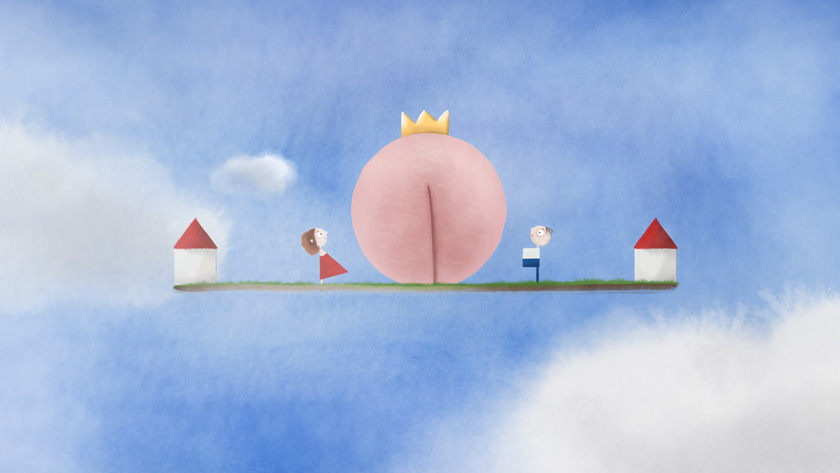
ZF: You don't keep in one technique, but explore. And then, in this exploration, you find out other aesthetics to show what you want to show. So, do you think that was intentional?
MG: No. I am sometimes jealous of people like Marjolaine Perreten, Marina Rosset, or Georges Schwizgebel, who found their technique and style and mastered it. Although it doesn't work like that with me. I can't choose my ideas; the ideas choose me. Now I have several, and I have one similar to 'Average Happiness'. So, the easiest thing would be to start with that idea, but it is just not the next one because another is more present. That means that I will do some crazy mixed media puppet animation film next. I have no idea how I can do it because it will be very complicated for puppets, but for some reason, it has to be done with puppets. I think what I'm not going to do is draw Animation.
However, I said before that I'm never going to do vector animation, and I did it, so who knows. But for me drawing Animation, I really like to watch it, but I don’t like to animate with this technique. It is just not my way of expression. I have little choice. It would have made no sense to draw 'Amourette' or make it in CG; even maybe it would have been easier than to do it with puppets. However, it is about the material, it is about wood on sandpaper, so it is puppet animation.
ZF: So, that comes from the idea to you, all together...
MG: Yes, the idea. So, if I have an idea with wood and sandpaper, it is not yet a narration. The idea is there, and it asks for a specific dramaturgy; it asks for a particular technique.
ZF: Okay. I think you have already answered this, but I wanted to ask, as a creator, that you often have an idea of an image that appears in your mind or from a story you heard. What inspires you?
MG: Basically, everything. There are spelling errors that can inspire a film. There is a distant relationship that can inspire a film like 'Amourette'. There are people you talk with about certain things, and then you get an idea of a metaphor. So, I don't know; it is fishing in a pond that is not clear water. Virginia Woolf wrote in an essay about how finding ideas is like fishing, and then something is biting; you pull it out, look at it, and then realize what kind of an idea it is.
ZF: As an animation artist, how do you define yourself?
MG: There is this saying, "Less is more". I think more is more, and sometimes I put too many layers in my films. So, it would be good, maybe, to do two films instead. Perhaps, 'Amourette' would have been stronger if I had concentrated more on the wood on the sandpaper and put the “erotic wrestling-dance” in another film, but somehow it came together. And then, I would say that content is more important than a technique for me. But I like technique, and I like to work with technique and animate at a certain level. And what I said before, it is not always what you like to see is that you are doing yourself.
I turned 44 recently. So I see more and more that the artistic Animation scene is a field that everybody is feeding this field. And this field would miss something if we didn't have somebody like Chintis Lundgren, Michael Frei, or Soetkin Verstegen. And this is interesting about art, that you add something, and it is just part of a giant canon. And the more you add, the richer it gets. So, I would say this is where I would put myself now.
ZF: Okay. And the last one, please could you talk about your work, having been chosen to take part in the "Swiss Animation Portraits"?
MG: It is a surprise that the two films will be screened at Annecy Festival. There is one old film, '2PS', made during my studies. It is drawn on a children's toy. You draw, and then you can erase it. In the film, a couple is sitting in a car, there is a windshield wiper, and they erase each other, showing that they don't have a supportive relationship anymore. This project was done with Gil Alkabetz, a guest teacher at Lucerne. We had to define a world with its own rules. So, that's what I did; I represented the world "Car" with this children's toy, a relationship with its own rules: erasing each other. It was a very organic process to find the different scenes. I don't think you understand everything in the film. There is a triangle story that nobody can ever understand, I guess. 'Average Happiness' was and is also shown in Annecy.
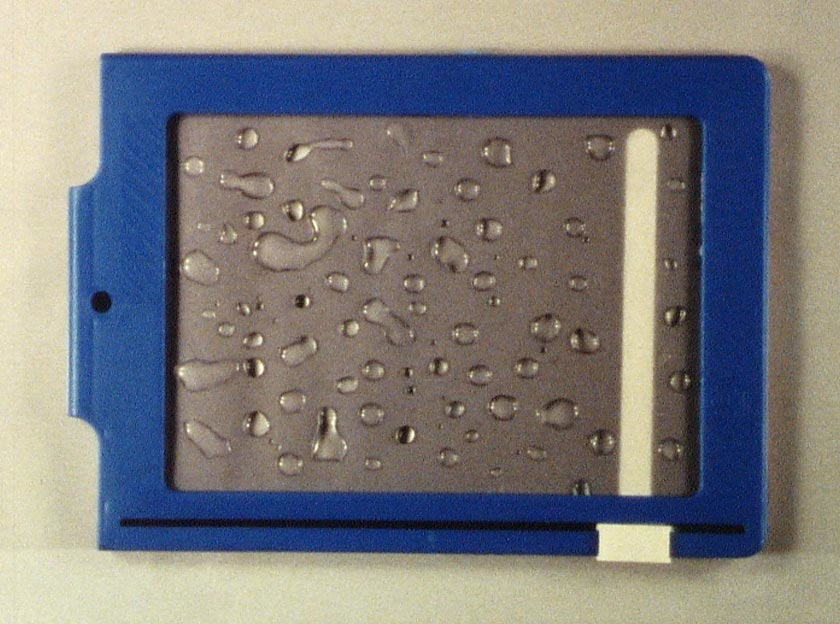
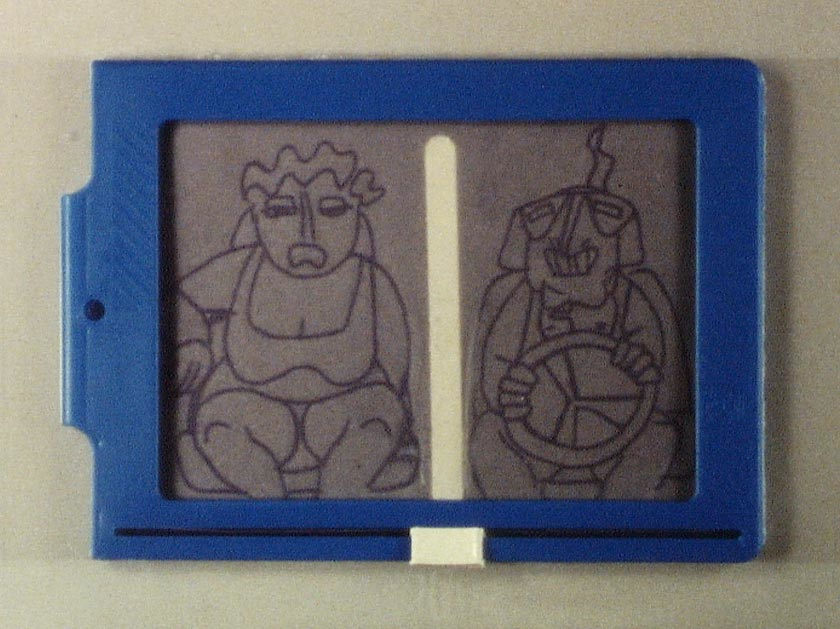
I like to reflect on the media Animation and my working process. It is an excellent opportunity to highlight the Swiss Animation scene, which is very diverse. Of course, the scene is diverse in every country, but I feel there is no particular style or feature to Swiss Animation – which suits me.
ZF: Thank you very much, Maja. I'm sure that ZF's readers will love our conversation.
Swiss Animation Portraits 2022 series is conducted in partnership with Swiss Films.
contributed by: Eliane Gordeeff




